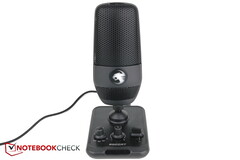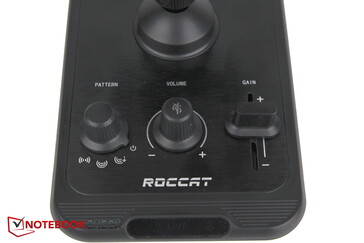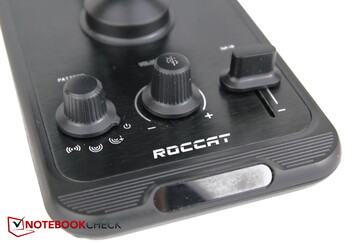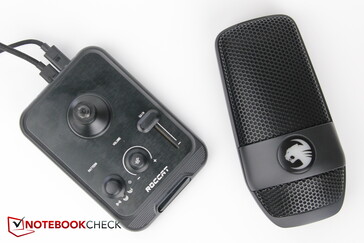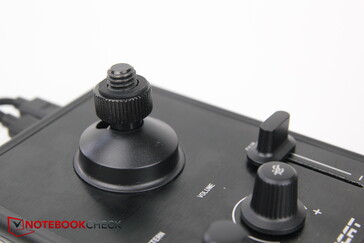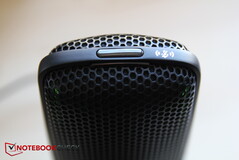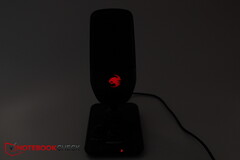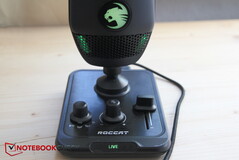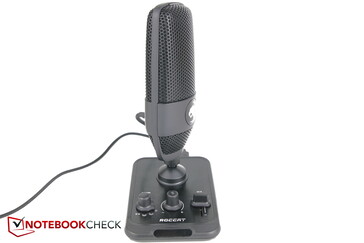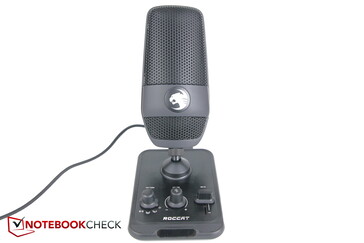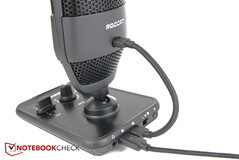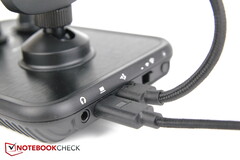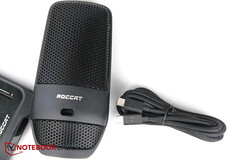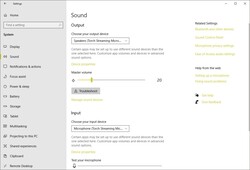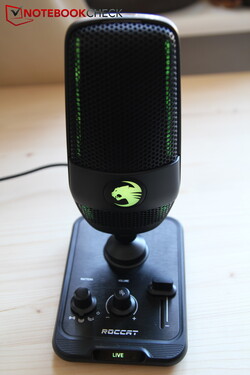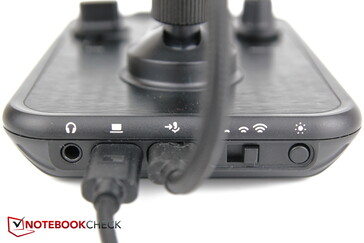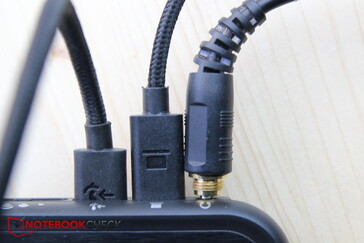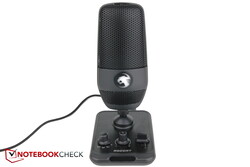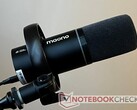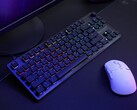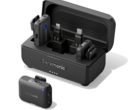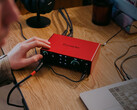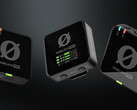Introduction
Roccat promotes its stand microphone as a dual-condenser recording device for gamers, streamers, and creatives. According to the manufacturer, it offers 24-bit sound and sampling up to 48 kHz. A pop filter is already integrated, and LED bars indicate the recording volume.
The base plate, which serves as a stand, also has a few useful controls, which Roccat advertises as "mixer-style controls". In fact, the microphone's polar pattern and recording modes can be set in three stages (Cardioid, Stereo, Whisper). There is also a volume control with mute and gain control for recording. The base plate can be removed, which also makes the Torch compatible with various swivel arms and tripods.
Note: Roccat provided us with a copy of the Torch for free testing. The article only reflects my honest, personal opinion and experience with the microphone and is not influenced by the manufacturer.
Shine, shine, little star
By the way, the microphone can also be muted via gesture control. If the hand gets too close to the upper gesture sensor, it is switched to mute, which is indicated by the red RGB illumination
The RGB lighting is a central element of the Torch. The central Roccat logo lights up, and there are light bars on the left and right that indicate sensitivity and volume, respectively. When muted, everything glows red. The baseplate displays a green glowing "live" as soon as recording or streaming is started.
Here it becomes clear that the microphone with its playful backlight is rather aimed at gamers, but you can also turn off the illumination. The light intensity can also be selected in 4 levels via a push button. The light rarely offers real added value; for example, the lateral light bars only statically show the gain slider position.
Dimensions and installation
I would have imagined the microphone smaller and was thus surprised when I freed the approximately 21 cm high micro baseplate combo from the packaging. The popular Blue Yeti (123 Euro on Amazon) is even bigger, though. The base with the controls is rather thin with a maximum of 2 cm, but the micro itself seems a bit clunky and also by the many plastic not particularly elegant, but that is certainly a matter of taste - on Amazon most customers are more than satisfied.
By the way, the Torch can also be rotated and tilted backward (about 45 degrees).
There are also three cables in the packaging. Initially, I was surprised about a very short USB-C cable with which you first have to connect the microphone to the base, otherwise, the controls are useless. I wondered if there could have been a more direct slip-on connection here. But the background is that you can also remove the mic from the base and mount it on a mic boom. You can still connect the microphone to the base plate and use the controls via the longer USB-C to USB-C cable that is also included.
The Torch is connected to the PC via a USB-C to USB-A cable. The handling is really super easy thanks to Plug & Play. The cable is plugged into the PC and the Torch and the device is set up after a few seconds. Windows then automatically sets the microphone as audio input and output. The base then also serves as an external sound card, and all audio signals from the PC are passed through or reprocessed via the headphone output.
Practical experience
If the Torch is also set as an audio output device in Windows, you can conveniently adjust the system volume via the volume knob and don't have to resort to the fn+F key combination in the worst-case - practical.
Adjusting the system volume via the mixer's knob apparently does not work if the Torch has not been set as an audio output device: Windows shows the change, but practically the overall volume does not change. So if the out doesn't go through the Torch, the volume knob is useless, too bad.
The gain slider controls the recording volume, i.e. how loud one's speech is recorded, the RGB bars on the right and left show the extent of the gain slider and thus the general sensitivity more or less statically.
Audio quality
If the device is also set as audio input, a quiet beeping can always be heard via the headphone output of the base. If you only turn on the output and let Windows take over the input via another microphone, the basic beeping is gone. The beeping is also not heard in recordings it is only related to the Torch as the output device because even with external speakers, the beeping is not heard with the Torch as the live input.
The Torch's integrated sound card thus leaves a divided impression overall. Switched as audio output and with headphones in the base, the background noise is noticeably higher than when the headphones are plugged directly into the jack output of the laptop. Therefore, it is not necessarily recommended as an output device. Here you can hear a recording of the output's non-standardized, and already quite high, background noise:
The microphone quality (input), on the other hand, seems to be good. The voice recordings are quite clear, even though a basic noise is perceptible, especially in quiet situations, of course. On the other hand, the ambient reverb noticeably faded out.
In the following, the same recording is the original which is normalized and with noise reduction added via the freeware Audacity.
Despite the relatively high background noise, the recording level is rather quiet. The Torch still records speech clearly even at a higher distance, but it is better to move closer to the microphone due to the generally low recording level.
Potential for improvement
The biggest personal problem during testing was the narrow space between the ports. Right from the start, I had the feeling that the mini-jack plug (3.5 mm) of my DT770 Pro from Behringer did not fit completely into the socket.
A closer look quickly reveals the problem: the ports of the "mixer" are much too close to each other so that the normal-sized jack plug of my headphones gets in the way of the included USB-C plug, even though the latter is also rather thin.
As a result, the headphone jack cannot be fully inserted. The result can be audio dropout on one side of the headphones or the entire disconnection to the PC when the jack pushes the USB-C plug too far to the side. Roccat should definitely improve this because the jack plug of my headphones is not overly large. However, the Torch should rather be used with the delicate plugs of in-ear headphones than with professional headphones.
Furthermore: as useful as the controls of the base plate are, they are useless during a streaming session, at least when the microphone is sitting on the plate. Then every control in the recording can be heard as noise because the microphone is not decoupled and every touch of the controls is transmitted by vibrations and can be perceived as unsightly "knocks" or other noise in the recording. Here it helps to operate the microphone separately from the baseplate.
Verdict - Good for convenient entry
The Roccat Torch is a convenient all-in-one solution for beginner streamers. The integrated switches allow for uncomplicated adjustment of the most important controls. The RGB elements can be adjusted and turned off. The mic itself offers good, even if somewhat quiet, recording quality, and it can also be operated separately from the mixer panel.
The Roccat Torch is not a high-end device and it can't be one because of the low price of 84 - 100 Euros. The baseplate leaves a less good impression than the microphone itself due to its high background noise and the quiet beeping during a recording as audio output. The PC jack is more recommended as an audio output. The jack port for headphones is also much too close to the USB-C port and thus pushes out somewhat larger headphone plugs.
The Roccat Torch is good and, above all, a convenient solution for gamers and streamers in the entry-level range without high-end demands. The jack port's space for headphones urgently needs to be increased and the base's audio-out quality improved, and an auditory decoupling from the base would also be desirable.
Currently, the Torch costs 99.99 Euros at Roccat itself and around 97 Euros at Amazon. In the meantime, the product was reduced in price and only cost 84 Euros in some stores.




